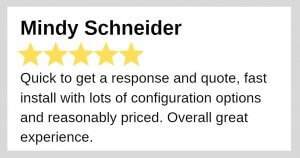As you know, the primary function of a fire sprinkler system is to control fire in the event of a fire emergency. However, before the system can serve its primary purpose, the design and layout must be in accordance with the most updated codes and standards by the National Fire Protection Association.
The codes your sprinkler system needs to follow will depend on the type, size, and scope (among other factors) of your commercial building. NFPA 13, “Standard of the Installation of Sprinkler Systems,” details the specific rules each type of commercial building needs to install and design their fire sprinkler system.
In today’s post, we’ll discuss some fire sprinkler system design tips for commercial buildings. If you require professional help in the design, installation, inspection, or maintenance of a commercial fire sprinkler system, please don’t hesitate to contact us.
The Design of a Fire Sprinkler System
If you are a landlord or a property manager, reach out to your sprinkler system contractor anytime you switch tenants.
The contractor needs to do a comprehensive evaluation of the sprinkler system to make sure it meets the tenants and their industry requirements.

For instance, your commercial building was once used as a retail space. However, you now have a pharmaceutical company taking over the facility.
The fire sprinkler system you have will need to be checked to ensure that it can extinguish and deal with whatever materials your new building tenants are working with.
The goal of a sprinkler system is to provide sufficient fire protection in an establishment. To achieve this, the type, number, layout, and design of the system must meet the building's requirements and occupants.
Regular Inspections of Fire Sprinkler Systems
Monthly Inspection
During monthly inspections, make sure that the gauge of your sprinkler system is thoroughly checked. This component must be inspected in dry conditions. After that, it also needs to match the pre-action and deluge system, as much as once a week, or once every two weeks.

Quarterly Inspection
Quarterly inspection of your sprinkler system entails checking the valve alarm gears, water flow alarm components, control valves, hydraulic nameplates, signal devices, and fire department connectivity.
Semi-Annual Inspection
The pressure switch type and vane components must be checked and tested every six months.
Annual Inspection
During an annual inspection, the fittings and pipework, seismic bracing, hangar, signage, and the actual sprinklers will need to be comprehensively checked.
Inspection Every Five Years
At this point, check if the gauges will need to be replaced altogether. Also, conduct precautionary tests if your sprinklers are installed in harsher conditions or in higher temperature areas within the facility.
What Makes an Effective Fire Sprinkler System Design?
Every facility will have its own set of requirements when it comes to a fire sprinkler system design. An experienced fire sprinkler system installation company will conduct proper planning and inspection.
Only then can they determine your property’s requirements and options before offering you a sprinkler system solution.
Here are the qualities of an effective sprinkler system design:
- Customizable release of pressure from the sprinkler heads to ensure that the threat is dealt with quickly.
- From multiple network sensor systems to individual control of each sprinkler heads to mobile accessibility, take advantage of smart sprinkler systems.
Supreme Coverage
No matter what the scale of the space is, every inch of it should be covered with a sprinkler. Whether the room needs ceiling-mounted or wall-mounted sprinklers, a professional sprinkler system designer can accurately determine that for you.

